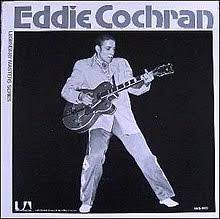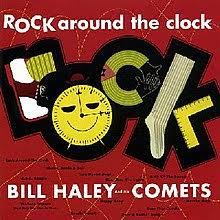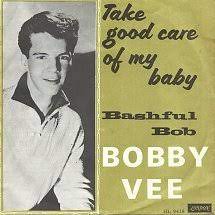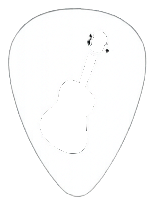- Home
- 50s & Vegas
- Easy Elvis Guitar Songs
Learn Easy Elvis Guitar Songs
Step-by-Step Acoustic Lessons
If you’ve ever wanted to play some of Elvis Presley’s iconic songs on acoustic guitar, this is the place to start.
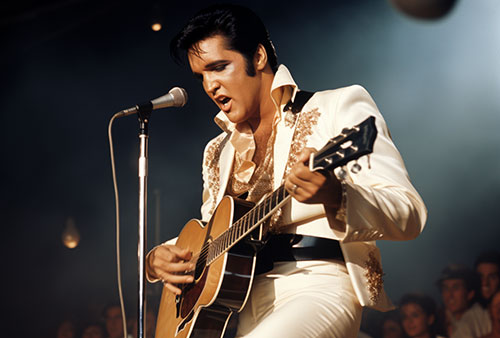
This collection features 12 easy Elvis guitar songs that are perfect for improving your rhythm skills while playing through timeless classics.
From upbeat grooves like “Guitar Man” and “Too Much Monkey Business” to powerful ballads like “If I Could Dream” and “In The Ghetto,” you’ll find a great mix of styles that reflect Elvis’s wide-ranging catalog.
🎸 Overview Video - “Watch This Preview of My Easy Elvis Guitar Songs”
Elvis Songs In The 50s
Elvis Songs In The 50s Vol 2
Elvis Songs In The 50s Vol 3
Elvis Guitar Songs From The 70s
Elvis Guitar Songs From The Movies Vol 1
Elvis Guitar Songs From The Movies Vol 2
Elvis Presley Love Songs Vol 1
Elvis Presley Love Songs Vol 2
----------------------------------------------------------------------
Elvis Presley Coloring Pages
Elvis Presley Wall Art
Easy Elvis Guitar Songs List
1. A Mess Of Blues
2. Doin The Best I Can
3. Guitar Man
4. Hows The World Treating You
5. If I Can Dream
6. In The Ghetto
7. Reconsider Baby
8. She Thinks I Still Care
9. Suspicious Minds
10. The Girl Of My Best Friend
11. There's Always Me
12. Too Much Monkey Business
1. A Mess Of Blues
- Learn To Play On Guitar
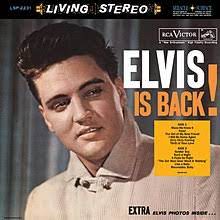
A Mess of Blues is a classic rock and roll song that was released in 1960. The song was part of his album titled "Elvis Is Back!" which marked his return to the music scene after completing his military service.
"A Mess of Blues" was released as a single in July 1960 and later included in the album. Known for its upbeat tempo and Elvis's energetic performance, the song captures the essence of his early rock and roll style.
The lyrics express the singer's feelings of heartbreak and the challenges of love, set against a lively musical backdrop.
"A Mess of Blues" is celebrated for its catchy melody, Elvis's dynamic vocals, and its contribution to the rock and roll sound of the early 1960s.
Chords And Strumming
This one you can play in Drop D Tuning with a capo on the 3rd fret with the chords A, D and E7. No lead work as you play a down strokes and a down up down up in a steady rhythm shuffle pattern.
Guitar Lesson Details Section – Sample Wording (Blended Arpeggio Style Emphasis.
Back To Song List
2. Doin The Best I Can
- Learn To Play On Guitar
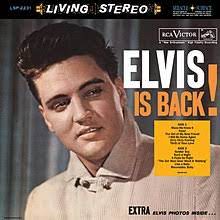
Doin' the Best I Can is a track that was included in his 1960 album "Elvis Is Back, marking the beginning of Elvis' return to recording after his military service. The album was recorded during several sessions in March and April 1960 at RCA Studios in Nashville, Tennessee. It was released in April 1960.
"Doin' the Best I Can" is a mid-tempo rock and roll song with a catchy melody. It features Elvis' energetic and charismatic vocal style that had become his trademark.
The lyrics of "Doin' the Best I Can" reflect themes of trying to make things work despite challenges and imperfections, which resonated with Elvis' life experiences at the time.
Chords And Strumming
Play this one with root up down up and repeat pattern and some down strokes as you head into the chorus with the chords G, G7, C, D, D7, A7 and an Am.
Guitar Lesson Details
Back To Song List
3. Guitar Man
- Learn To Play On Guitar
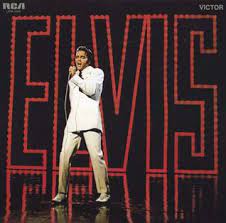
Guitar Man was originally written and recorded by Jerry Reed in 1967, but Elvis recorded his own version in 1968. Elvis's rendition of "Guitar Man" was featured on his album titled "Elvis (NBC TV Special)" or commonly referred to as the "68 Comeback Special."
The song showcases Elvis's vocal and musical abilities, with his passionate delivery and guitar skills on full display. It became a fan favourite and is often remembered as one of the standout performances from the '68 Comeback Special.
It's worth noting that Elvis's version of "Guitar Man" was not released as a single during his lifetime, but it has since been included on various compilation albums and reissues of his music.
The song remains popular among Elvis fans and is recognized as one of his notable recordings.
Chords And Strumming
This one has drop D tuning with the chord D, G, A, E7 and a D7 at the end with walking bass all the way through using a steady down up down up shuffle pattern and some lead required.
Guitar Lesson Details
Back To Song List
4. Hows The World Treating You
- Learn To Play On Guitar
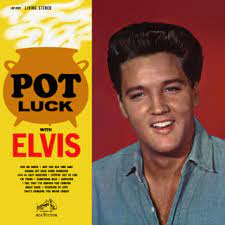
How's the World Treating You was originally written by country music songwriter and singer Boudleaux Bryant. It was first recorded by The Louvin Brothers in 1953.
Elvis Presley covered "How's the World Treating You" and included it on his 1962 album titled "Pot Luck." His rendition of the song showcases his vocal versatility and emotional depth. Elvis's interpretation of the song is often praised for its heartfelt delivery and the way he connects with the lyrics.
While "How's the World Treating You" was not released as a single by Elvis, it remains a notable track in his discography. The song has been covered by various artists over the years, but Elvis's version is well-regarded and appreciated by fans of his music.
Chords And Strumming
In standard tuning you can play a root up down up and repeat with a few bass runs while in standard tuning. A little picking here with the chords C, G, F and a C7.
Guitar Lesson Details
Back To Song List
5. If I Can Dream
- Learn To Play On Guitar
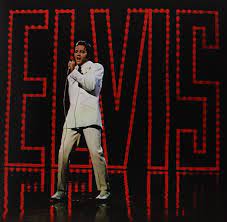
If I Can Dream was first released as a single back in 1968 and reached #12 in the US, #11in the UK and #2 in Australia and is a passionate and emotive ballad with a message of hope, unity, and social change.
The lyrics express a yearning for a better world where people can come together and overcome differences to create a brighter future. The song's uplifting and inspirational tone is complemented by Elvis Presley's passionate and soulful vocals, which are filled with emotion and conviction.
The musical arrangement of "If I Can Dream" features a powerful orchestral backing, including strings, brass, and choir, which adds to the grandeur and impact of the song. It is often praised for its epic and cinematic quality, as well as its timely and poignant lyrics that reflected the social and cultural climate of the late 1960s.
Elvis Presley's performance of "If I Can Dream" in his '68 Comeback Special was a defining moment in his career, marking a resurgence for the King of Rock and Roll. The song was well-received by audiences and critics alike and has since become one of Elvis Presley's most beloved and enduring songs.
Chords And Strumming
For rhythm you can start start with a down down up down up down down down and repeat. No lead but a lot of chords here in standard tuning and they are C, Am, F, G, Dm, C7, E7, Em, Adim, G6, D7, D, Bm, A7, D7, Ddim, A7sus, Gsus and a Gm.
Guitar Lesson Details
Back To Song List
6. In The Ghetto
- Learn To Play On Guitar
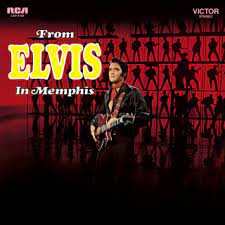
In the Ghetto is a famous Elvis Presley song from 1969, written by Mac Davis. It tells the story of a poor boy growing up in the city, showing the tough life in poor neighborhoods.
The song mixes soul, pop, and gospel music. Elvis sings it with a lot of feeling, making it very emotional. It became a big hit in many countries, including the US, UK, and Canada.
"In the Ghetto" is special because it talks about serious social issues. It's different from Elvis's usual love songs. People still like it today because of its important message and Elvis's powerful singing. Many other singers have also performed this song.
Chords And Strumming
Played using a down down up down up down up shuffle rhythm pattern and a few chops in the rhythm in standard tuning. A few arpeggio picking notes for lead with the chords Fmaj7, Cmaj7, Gsus, G, C, F, G6, Am, D, D7, Dm and an Em.
Guitar Lesson Details
Back To Song List
7. Reconsider Baby
- Learn To Play On Guitar
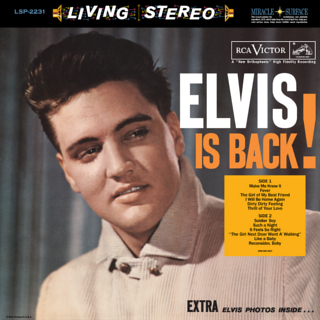
Reconsider Baby is a blues song originally written and recorded by Lowell Fulson in 1954. Elvis Presley recorded his version of the song in 1960 during the sessions for his album "Elvis Is Back!" This was Presley's first album after returning from his military service.
Elvis's version of "Reconsider Baby" is notable for its raw, bluesy feel, showcasing his ability to perform in a more mature, adult-oriented style compared to his earlier rock and roll hits. The recording features a powerful saxophone solo by Boots Randolph and demonstrates Elvis's versatility as a vocalist.
Chords And Strumming
This one has a blues rhythm to it with a down up down up down rhythm pattern and some lead work in standard rhythm with the chords E, A, B7 and a A7.
Guitar Lesson Details
Back To Song List
8. She Thinks I Still Care
- Learn To Play On Guitar
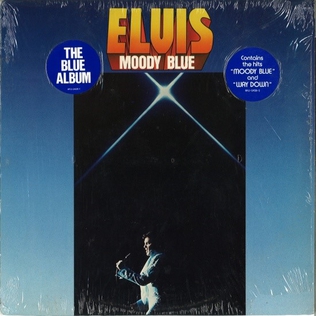
She Thinks I Still Care is a country song originally written by Dickey Lee and Steve Duffy. It was first recorded and made famous by George Jones in 1962, becoming one of his signature hits.
The track is featured on Elvis Presley's album "Moody Blue," which was released in 1977. This was Elvis's final studio album released before his death in August of that year. "Moody Blue" was a mixture of live and studio recordings, with some tracks recorded at Graceland, Elvis's home in Memphis.
Chords And Strumming
You can play this one with a root up down up and repeat rhythm pattern in standard tuning with the chords G, D, C, G7 and an A7. You can also play a root down up down up root up down up rhythm as you approach the bride. A little pick in this one.
Guitar Lesson Details
Back To Song List
9. Suspicious Minds
- Learn To Play On Guitar
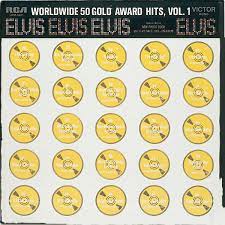
Suspicious Minds is one of Elvis Presley's biggest hits. It came out on August 26, 1969, and was written by Mark James. The song mixes rock, soul, and gospel music.
In the song, Elvis sings about a troubled relationship where he doesn't trust his partner. It has a catchy tune and a memorable chorus that people love.
"Suspicious Minds" was very popular. It reached #1 on the US charts and was Elvis's last #1 hit while he was alive. It also did well in other countries. The song sold over a million copies, earning a gold certification.
You can find this song on the album "Worldwide 50 Gold Award Hits".
Chords And Strumming
I play this in G with a C/G, C, D, Bm, Em, Dsus and a B7. For rhythm play a down down down up down up and repeat in standard tuning. I put a led break in here but there is none in the original version.
Guitar Lesson Details
Back To Song List
10. The Girl Of My Best Friend
- Learn To Play On Guitar
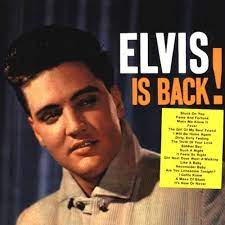
The Girl of My Best Friend was written by Beverly Ross and Sam Bobrick. Elvis recorded his version of the song on March 26, 1960, at RCA Studio B in Nashville, Tennessee.
The song was released as a single in 1960 and reached number nine on the Billboard Hot 100 chart. It was also included on Elvis's album titled "Elvis Is Back!" which was released in the same year. The song showcases Elvis's smooth vocals and features a mix of rock and roll and pop influences.
"The Girl of My Best Friend" has since become a popular and well-recognized song in Elvis's discography. It has been covered by various artists over the years and remains a favorite among fans of his music.
Chords And Strumming
You'll want to play a root down up root up down up rhythm pattern here or as I like to call it sometime, a rake pattern in standard tuning. The chords you'll need are E, Dbm, B7, A, Gbm, E7 and a Gb. No lead work here, just rhythm.
Guitar Lesson Details
Back To Song List
11. There's Always Me
- Learn To Play On Guitar
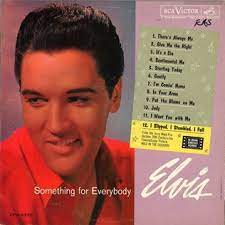
There's Always Me can be found on the album "Something for Everybody," released in 1961. The song was written by Don Robertson, a songwriter who contributed to many of Elvis's songs.
This song was released as a single in 1961 but did not achieve significant chart success.
"There's Always Me" is a romantic ballad expressing a reassuring message to a loved one. The song reflects the narrator's devotion and availability, emphasizing that no matter what happens, they will always be there for the person they love.
Once again as music videos were not widely produced during the time of the song's release, there is no official music video for "There's Always Me."
Chords And Strumming
Play a root up down up and repeat pattern here with a capo 5th in standard tuning. Chords you'll need are C, Dm, G, G7, Fm, Adim, D7, Dm7, E7 and an A7 with some picking in the middle.
Guitar Lesson Details
Back To Song List
12. Too Much Monkey Business
- Learn To Play On Guitar
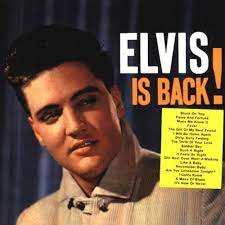
Too Much Monkey Business was originally written and recorded by Chuck Berry in 1956. Elvis covered the song and included it on his album titled "Elvis Is Back!" released in 1960.
Elvis's version of "Too Much Monkey Business" is a lively and energetic rendition that showcases his rock and roll style. The song features Elvis's distinctive vocals and the characteristic guitar-driven sound of his early recordings. It captures the spirit of the original Chuck Berry version while adding Elvis's own flair.
Elvis Is Back!" is widely regarded as one of Elvis's best albums, and his version of "Too Much Monkey Business" is a standout track on the record.
Chords And Strumming
For rhythm here you'll play a steady down up down up and repeat in standard tuning with the chords E, A and B7. There is a bit of lead work here.
Guitar Lesson Details
Back To Song List
Whether you’re just starting out or looking to brush up on your Elvis favorites, these lessons are built to help you get better as a rhythm guitarist while having fun with some of the most memorable songs in rock and roll history.
Start with the free demos and PDFs, and if you find my teaching style helpful, you can grab the full lesson tutorials anytime. More Elvis lessons are just a click away — explore the rest of the collection below!
If you liked this easy Elvis guitar songs page you might also like ... (click images)
Home Page
Top Hits Of The 50s
